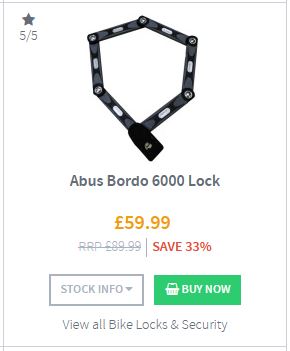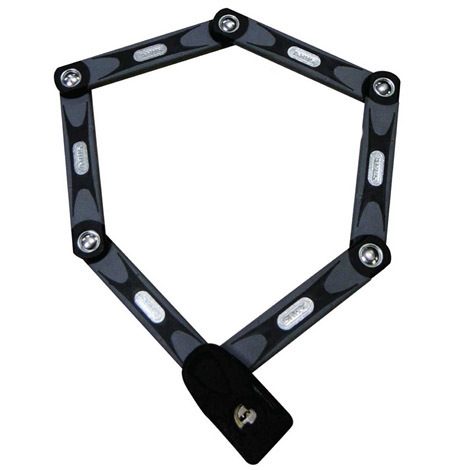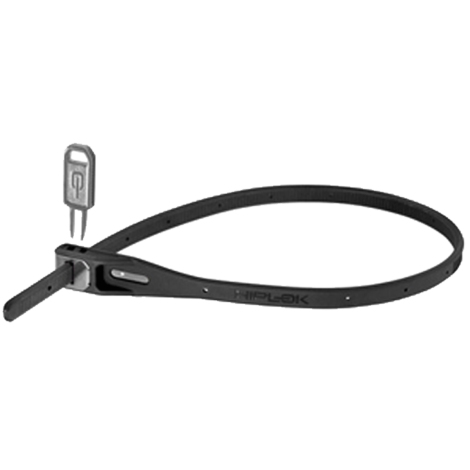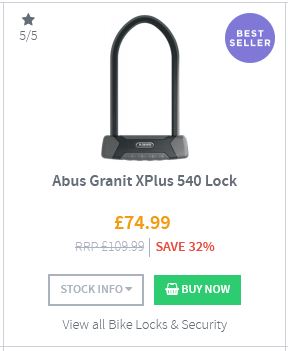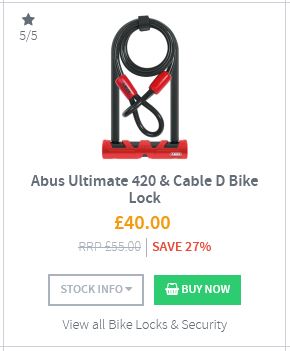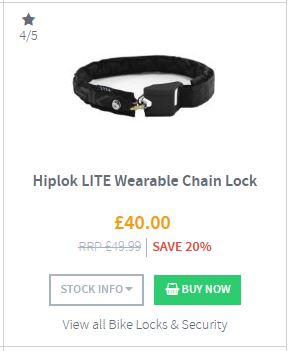Just as some locks are better than others, some ways of locking up your bike are better than others too. Here’s our quick guide to the Do and Don’ts of securing your bicycle.

DO buy the best lock that you can afford. Ideally you actually could do with two U-locks or a U-lock and a cable lock.
DON’T think “any lock is better than no lock”. Using a weedy lock will probably just make you complacent about where and how you lock your bike. And one day you’ll arrive back to find that your bike isn’t there anymore. Unlike other bike components, go for a heavy, solid lock or something extremely tough. Double or triple heated hardened steel locks are very hard to break for the potential thief and will act as a big deterrent, especially if there is a less well secured bike nearby.
DO make sure your bike(s) are secure at home, is the garage or shed safe? Many cycle insurance companies stipulate anchor points for bike locks in garages and sheds.
DON’T use apps such as strava to and from your home, switch on and off with a few hundred metres to go or change security settings. Thieves have been known to target riders from GPS data and pictures of bikes posted on social media.
DO have a look at your bike and spot any components that can be removed without tools (seatpost, wheels for example). Either take them with you while you go shopping or while you’re at work, or think about replacing the quick release fixings with bolted versions instead. Don’t leave easily removable lights or computers attached to your bike.
DON’T carry around your heavy U-lock if you only ever use it in the same place when you get to your workplace. Leave it locked to the post/gate/whatever while you’re not there.
Having said that, DO think about not locking your bike in the same place all time. It increases the chances of thieves spotting it and monitoring it.
DON’T lock your bike in quiet public spaces. Thieves like quiet places to work. Try to lock your bike in spots that have plenty of pedestrian traffic.
DO buy a U-lock that can fit around what you need it fit around but don’t automatically go for a whopping one. We think it’s best to go for U-lock that’s just long enough to pass through your rear wheel, chainstay or seat tube and the lamppost (or whatever is you anchor on to). Keeping things compact mean there isn’t room for thieves to use leverage bars to break open the U-lock.
DON’T forget to lock your front wheel. Either remove it and take it with you. Or remove it and lock it against your rear wheel/frame/lamppost. Or keep it in the bike and use another lock to lock it to the frame and/or another adjacent lamppost or railing.
DO buy a second lock to lock up your front wheel. By all means go for another U-lock if you’re prepared to lug it around but we reckon a decent cable lock is the better solution. Front wheels aren’t worth enough on their own for most thieves to bother with lock-breaking for.
DON’T lock your bike to something that it can be lifted over or off.
DO try to lock your bike in a position where you or a workmate can see it.
DON’T leave a very expensive looking bike… Make your flashy commute bike look a bit rubbish by duct taping over the posh brand logo, make it look as bland and tatty as possible to deter the would-be thief.
DO lock your bike next other less-well-secured bikes. Make your bike the least appealing prospect to thieves.
DON’T think any CCTV is a deterrent. It possibly won’t be functional and if it is the footage will no doubt be useless.
DO try to get together with other bike commuters in your workplace to try to get secure parking at your work. Modern, ‘nice’ employers will want to offer secure bike parking, eveyone knows cyclists are healthier employees.
Top Locks
